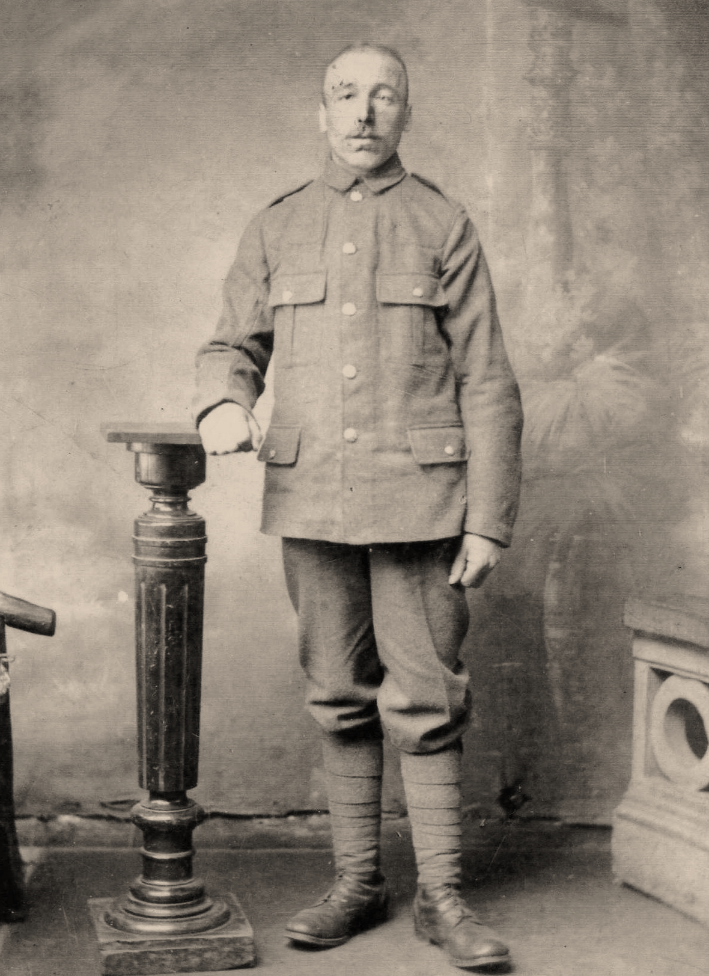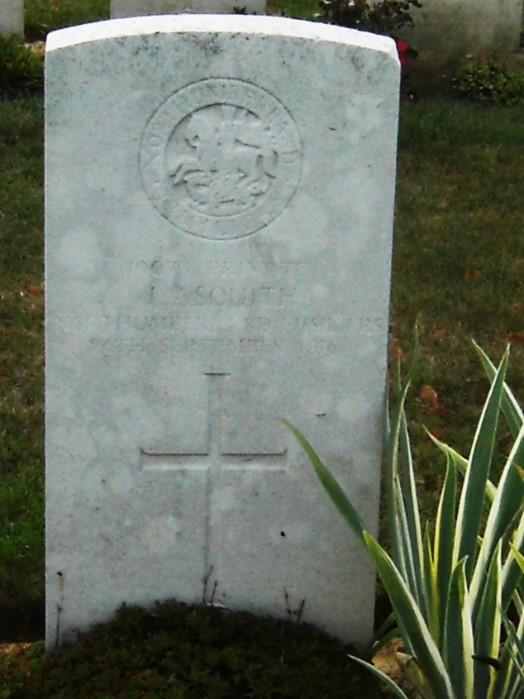John Asquith
Date of birth: 19.07.1886
Date of death: 26.09.1916
Area: Knottingley
Regiment: Northumberland Fusiliers
Family information: Son of George and Mary Elizabeth Asquith
Rank: Private
Service number: 19073
War Service
John and his elder brother James enlisted together in April 1915, serving in the 8th Battalion Northumberland Fusiliers, belonging to 34th Brigade of the 11th Division.
11th Division were part of the Mediterranean Expeditionary Force sent in the summer of 1915 to the Suvla Bay Area.
The Battalion suffered heavy losses on 19th August in an action preceding the attack on Scimiter Hill. John and James were part of the draft sent to refit the battalion, arriving at the end of September. They took their turn in the firing line in the area of Jephson’s Post. In November the troops had to endure blizzard conditions, many suffered from frost bite. There were deaths from exposure. Pte Harry Williamson also of 8th Northumberland Fusiliers died 26th November and is buried in Hill 10 Cemetery in Suvla Bay, Gallipoli.
The Division were there until December 1915 and evacuated between 17th – 19th December to the islands of Lemnos and Imbros. Then to Egypt, to the area east of the Suez Canal, where they dug defences and did tactical exercises.
On 3rd July they sailed from Alexandria on HMT Llandovery Castle landing in Marseilles before their journey to the Somme area. They spent time in the trenches repairing, wiring and patrolling. When in billets they trained. On 19th August a raid was carried out to obtain information of the enemy. By 17th September they were in the area near La Boisselle in Reserve. On the night of 25/26th September they relieved 6th York & Lancasters in front line trenches.
After the taking of Poiziers attention turned to the Thiepval Ridge and the high ground north of the Albert/Bapaume Road. The Battle of Thiepval Ridge took place 26th -30th September. 34th Brigade was on the right of 11th Division next to the Canadian Division. They started at Mouquet Farm and after bombing the cellars they advanced to their objectives of Zollern and Stuff Redoubts. They were met with stiff opposition and violent machine-gun fire. Nearly all the men in the leading companies were killed or wounded. Among them John Asquith. One officer collected some 50 survivors and dug in; a few others survived in shell holes.
In the same action his brother James was wounded and treated in a Canadian Hospital for shell shock. He was evacuated home 3rd October and as he was deemed no longer physically fit he was transferred to the Royal Defence Corps. He was discharged in 1917.
John Asquith was buried in Courcelette British Cemetery.
John was awarded the 1914-1915 Star, The British War Medal and The Victory Medal.
The only one the family have is the 1914-1915 Star. Perhaps the other two are somewhere in Knottingley.
His service in the field lasted just one year, in which he experienced the fighting conditions of Gallipoli, Egypt and the Somme.
Family Life
John Asquith was born in Knottingley on 19th July 1886. He was the third son of George and Mary Elizabeth Asquith. George was from Beal but moved to Knottingley when he married Mary Elizabeth (Lightfoot). All the children were born in Knottingley – Alice, George, James, John, Joseph, Robert and Elizabeth Ann.
The family lived in Racca Green and the Croft. Most worked in the Glassworks. John was a founder.
 John Asquith
John Asquith
 War Grave of John Asquith
War Grave of John Asquith

